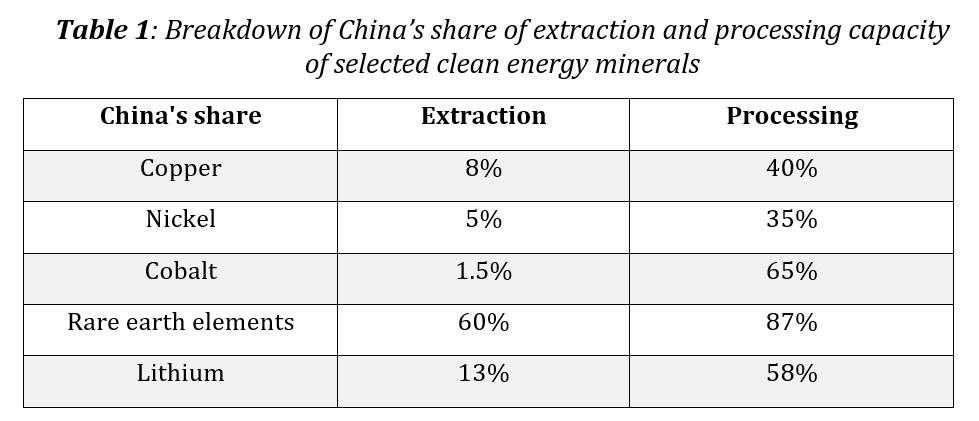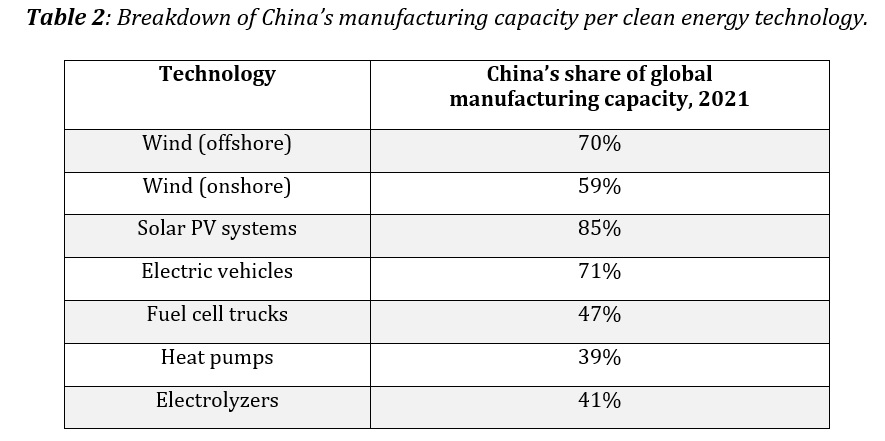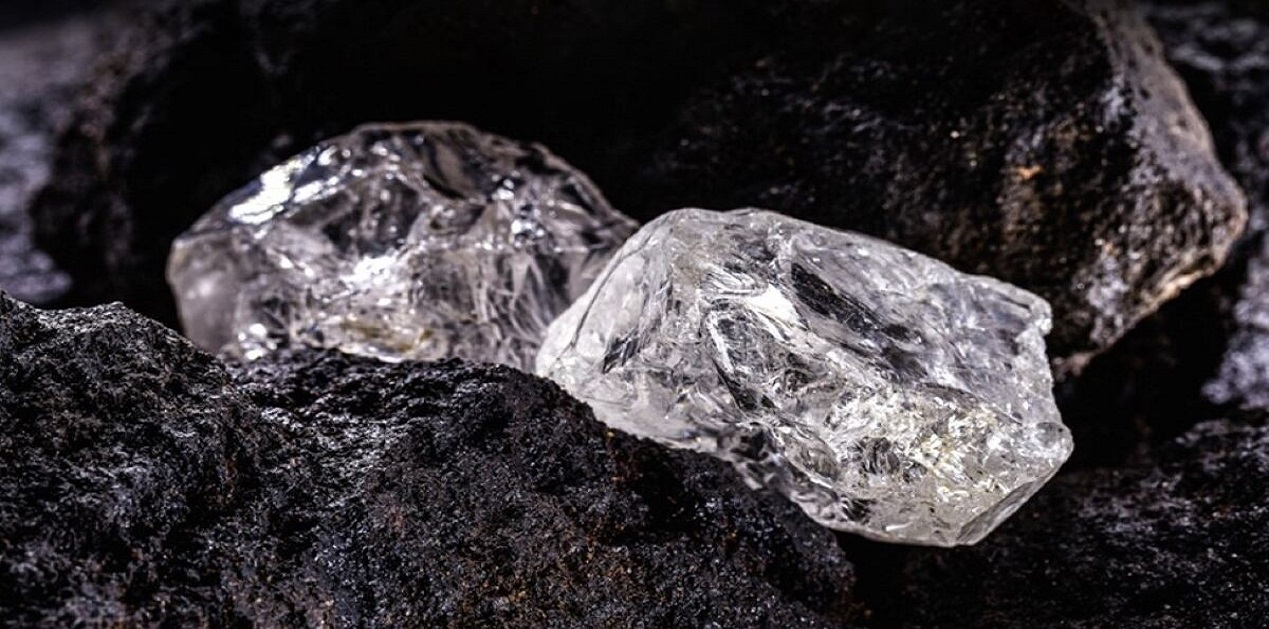Introduction
On 9 February 2022, India announced the discovery of 5.9 million tons of lithium deposit in the Union Territory of Jammu and Kashmir. The estimated value of the deposit was around USD 410 billion.[1] Though the finding is preliminary, if borne out, it would put India among the world’s top holders of lithium. While there is little doubt that India’s discovery of lithium in Jammu and Kashmir will have major implications for the country’s clean energy transition, greenhouse gas emissions, energy independence, economic development, and geopolitics, there are also causes for concerns. In the absence of strict social and environmental safeguards, extracting lithium in Jammu and Kashmir could potentially fuel dissatisfaction and grievances in the territory. That could be taken advantage of by extremist groups in their effort to undermine peace and security in the territory.
Lithium: A “white oil” that is critical to a clean future
Lithium, discovered in 1817, is a soft, white, and silvery metal. It is also the lightest known metal on the planet. The United States Geological Service (USGS) estimated the world’s identified lithium resources as of 2021 at 89 million tons and supply at 100,000 tons.[2] Some of the top holders of the lithium are Bolivia (21 million tons); Argentina (19 million tons); Chile (9.8 million tons); USA (9.1 million tons); Australia (7.3 million tons); China (5.1 million tons); Congo (3 million tons); Canada (2.9 million tons); Germany (2.7 million tons); and Mexico (1.7 million tons). The world’s top producers of lithium in 2021 include Australia (55,000 tons); Chile (26,000 tons); China (14,000 tons); Argentina (6,200 tons); Brazil (1,500 tons); Zimbabwe (1,200 tons); and Portugal (900 tons).
In 2010, ceramics and glass manufacturing is the single largest end-user of lithium accounting for 31% of worldwide lithium consumption.[3] But that fell to 14% in 2021. Rechargeable lithium-ion batteries (for mobile phones, laptops, digital cameras, and electric vehicles) in turn accounted for 23% of worldwide lithium consumption in 2010. But that rose to 74% in 2021. As lithium-ion batteries have become the batteries of choice for powering electric vehicles and storing energy from renewable power generators like solar and wind, it is expected to account for 84% of all lithium produced in 2025. And by 2040, global demand for lithium was projected to grow by 42 times by 2040 relative to 2020 levels due primarily to soaring global demand for lithium-ion batteries.[4]
Interest in lithium-ion batteries was fuelled by the realization of the extent of society’s dependence on fossil fuels. That realization came about during the 1973 Arab oil embargo. In retaliation for the US’s decision to support Israel during the Arab-Israeli War or the Yom Kippur War that year, Arab members of the Organization of Petroleum Exporting Countries (OPEC) imposed an embargo against the country that year. Arab OPEC members also extended the embargo to other countries that supported Israel including the Netherlands, Portugal, and South Africa. The embargo both banned petroleum exports to the targeted nations and introduced cuts in oil production and it lasted until 1974.
The search for alternative sources of energy i.e. more powerful rechargeable batteries began soon after. Existing rechargeable batteries such as lead-acid battery (invented in 1859) and nickel-cadmium battery (invented in 1899) were bulky, heavy, and less efficient. Less bulky, less heavy, and more powerful batteries therefore were needed. That led to the discovery of lithium-ion batteries and they were released for commercial use in the 1990s. Lithium-ion batteries have many advantages over traditional rechargeable batteries. They store about 10 times as much energy as lead-acid or five times as much as nickel-cadmium batteries. They are also extremely lightweight as compared to traditional rechargeable batteries and require little maintenance. As a result of the proliferation of rechargeable lithium-ion batteries for powering modern electric vehicles and storing energy from renewable power generators like solar and wind, lithium came to be known as “white oil.”
A game changer for India?
India’s discovery of lithium in Jammu and Kashmir could be a game changer for the country’s clean energy future and climate ambitions. The country is currently the third biggest emitter of greenhouse gases in the world with the transport sector accounting for 13.5% of its total energy-related CO2 emissions.[5] And within that sector, road transport accounted for more than 92% of emissions.[6] Decarbonising road transport therefore become a critical element of India’s emissions reduction and pollution mitigation plans. One of the ways in which India sought to achieve this is by accelerating the adoption of electric vehicles. India has set a goal of achieving 30% electric vehicle penetration for private cars, 70% for commercial cars, 40% for buses, and 80% for two and three-wheelers by 2030. However, the uptake of electric vehicles in the country has been slow so far. As per India’s digitized vehicle records, there are over 279 million vehicles in the country as of July 2022. Of these, just over one million or 0.47% are electric vehicles.[7] India therefore needed to massively ramp up domestic production of lithium-ion batteries and the discovery of lithium in the country could enable it to do just that.
Also, owing to the lack of domestic supply, India relies heavily on foreign sources to meet its lithium and lithium-ion battery requirements. For example, Hong Kong (37.32%) and China (32.05%) accounted for the largest share of its lithium imports in 2021.[8] China (72.73%) and Hong Kong (23.48%) also accounted for the largest share of its lithium-ion battery import that year. India’s continued reliance on China for lithium and lithium-ion batteries is untenable as it can create potential economic, energy, and national security risks. And China has in the past demonstrated its willingness to weaponise its dominance of clean energy minerals. For example, it blocked exports of rare earth elements to Japan due to a territorial row in 2010. China’s dominance of clean energy minerals and technologies therefore is a cause for concern. The country produces 60% of all rare earth elements, a crucial category of minerals used in products like electric vehicles, solar panels, wind turbines, etc. Even when China has limited production for other clean energy minerals like cobalt and lithium, it still dominated the refining and processing operations. Beyond this, China also dominates the global manufacturing capacity for clean energy technologies. For example, it averages 65% of global manufacturing capacity for seven key clean energy technologies. Developing local supply of lithium therefore, becomes more imperative than ever for India. The discovery of significant reserves of lithium in Jammu and Kashmir offer a pathway for India to develop local supply of lithium and lithium-ion batteries and reduce its dependence on China.


Causes for concern
There is little doubt that India’s discovery of lithium in Jammu and Kashmir will have significant implications for the country’s clean energy transition, greenhouse gas emissions, energy independence, economic development, and geopolitics. However, there are potential risks too.
Any type of resource extraction is eventually harmful for the environment and lithium mining is no exception. The process of extracting lithium consumes significant amounts of water and energy. In the so-called Lithium Triangle of South America - made up of Chile, Argentina and Bolivia - vast quantities of water are pumped from underground sources to help extract lithium from ores, and this has been linked to the lowering of ground water levels and the spread of deserts. Lithium mining in the Chilean portion of the triangle reportedly consumed 65% of the region’s water supplies, forcing local farmers, who grow quinoa (a type of grain) and herd llamas, to buy water from other areas.[11] Meanwhile, a proposed open pit lithium mine in Nevada, projected to be one of the largest lithium production sites in US history with depth reaching about 370 feet, could consume 12,204 liters of water per minute and cause the water table to drop on land by an estimated 12 feet.[12]
Then there is the potential leakage of toxic chemicals from lithium mines including antimony (a semi-metallic chemical element that can cause cancer) and arsenic (metalloid component of the Earth’s crust that can cause lung and skin cancers). In China, the leakage of toxic chemicals from lithium mines in the Tibetan plateau have contaminated grasslands, soils, and rivers and that have poisoned fishes and caused yaks to die.[13] Then there is the potential displacement of people due to mining. Displacement due to mining can result in the loss of physical and non-physical assets, including homes, communities, productive land, income-earning assets and sources, subsistence, resources, cultural sites, social structures, networks and ties, cultural identity, etc. Failure to mitigate or avoid these risks may lead to the impoverishment of displaced people.
The potential environmental and socio-economic impacts of lithium mining could potentially fuel dissatisfaction and grievances in Jammu and Kashmir. Environmental groups in the territory have already expressed their concerns and have even organized a strike earlier this year. They contended that lithium mining in the territory would cause irreversible harm to the ecosystem and adversely affect the indigenous and local communities. Dissatisfaction and grievances, if they are not handled deftly, could in turn play into the hands of extremist groups in the territory. One such group, the People’s Anti-Fascist Front (PAFF), has already warned against the “exploitation” and “theft” of the territory’s resources.[14] It also threatened to “attack” Indian companies operating there.
Conclusion
There is little doubt that India’s discovery of lithium in Jammu and Kashmir will have significant implications for the country’s clean energy transition, greenhouse gas emissions, energy independence, economic development, and geopolitics. However, there are potential risks too. The environmental and socio-economic impacts associated with lithium mining - displacement of population, habitat destruction, chemical contamination, high levels of water consumption, etc. – could fuel dissatisfaction and grievances and that could play into the hands of extremist groups in the territory. These challenges however are not completely insurmountable.
Strict security measures needs to be put in place to protect mining infrastructure as well as workers. Also, India should make sure that displaced populations are adequately compensated. It should also make sure that the overall economic benefits of mining lithium in Jammu and Kashmir should be reaped first and foremost by the local communities there. This can be done by prioritizing local youths for mining and refinement jobs and using lithium mining to revitalize the local economy. One senior official in the territory has already observed that the youths of Jammu and Kashmir, whether skilled, semi-skilled or unskilled, “will be part of the project” and that affected people will be “adequately compensated and rehabilitated.”[15] Also, rather than simply extracting lithium from Jammu and Kashmir and transporting it by trains, officials in the territory hinted at establishing special economic zone with two to three metallurgical plants to process and refine lithium in the territory. That will further benefit the local people and help boost the territory’s economy. Finally, India should strive to limit lithium mining’s potential negative impact on water resources and the environment. Towards this end, it is imperative that India target project locations and use extraction methods that are the least likely to cause negative impacts first.
End Notes
[1]Mistry, Jagar. “How Rs 34 trillion lithium find could shape India’s EV story.” Economic Times. February 13, 2023. https://economictimes.indiatimes.com/markets/stocks/news/
[2]U.S. Geological Survey (USGS). 2022. “Mineral Commodity Summaries.” U.S. Department of the Interior. January. https://pubs.usgs.gov/periodicals/mcs2022/mcs2022.pdf
[3]Bhutada, Govind. “Lithium Consumption Has Nearly Quadrupled Since 2010.” Visual Capitalist. April 13, 2022. https://elements.visualcapitalist.com/lithium-consumption-has-nearly-quadrupled-since-2010/
[4]International Energy Agency (IEA). 2022. “The Role of Critical Minerals in Clean Energy Transitions.” World Energy Outlook Special Report. Revised version. March.
https://iea.blob.core.windows.net/assets/ffd2a83b-8c30-4e9d-980a-52b6d9a86fdc/TheRoleofCriticalMineralsinCleanEnergyTransitions.pdf?te=1&nl=climate-forward&emc=edit_clim_20221011
[5] “Decarbonising the Indian transport sector pathways and policies.” Climate Action Tracker (CAT). December 2020. https://climateactiontracker.org/documents/832/CAT_2020-12-09_Report_DecarbonisingIndianTransportSector_Dec2020.pdf
[6]Kamboj, Puneet, AnkurMalyan, Harsimran Kaur, Himani Jain, and VaibhavChaturvedi. 2022. “India Transport Energy Outlook.” Report. Council on Energy, Environment and Water (CEEW). June. New Delhi. https://www.ceew.in/sites/default/files/ceew-research-transport-energy-use-carbon-emissions-decarbonisation.pdf
[7] “Over 13 lakh Electric Vehicles in use in India;Centre is taking a number of steps to promote use of electric vehicles in India.” Public Information Bureau (PIB). Ministry of Heavy Industries. June 19, 2022. https://pib.gov.in/PressReleasePage.aspx?PRID=1842704
[8] “Lithium Import and Production.” Press Information Bureau. Government of India. Ministry of Mines. March 21, 2022. https://pib.gov.in/Pressreleaseshare.aspx?PRID=1807681
[9]Venditti, Bruno. “Visualizing China’s Dominance in Clean Energy Metals.” Visual Capitalist. January 20, 2022.
https://elements.visualcapitalist.com/visualizing-chinas-dominance-in-clean-energy-metals/
[10]Oğuz, Selin. “Where are Clean Energy Technologies Manufactured?” Visual Capitalist. March 28, 2023. https://www.visualcapitalist.com/where-are-clean-energy-technologies-manufactured/
[11]Katwala, Amit. “The spiralling environmental cost of our lithium battery addiction.” Wired. August 5, 2018. https://www.wired.co.uk/article/lithium-batteries-environment-impact
[12]Penn, Penn and Eric Lipton. “The Lithium Gold Rush: Inside the Race to Power Electric Vehicles.” The New York Times. May 6, 2021.
https://www.nytimes.com/2021/05/06/business/lithium-mining-race.html
[13]Denyer, Simon. “Tibetans in anguish as Chinese mines pollute their sacred grasslands.” Washington Post. December 26, 2016.
https://www.washingtonpost.com/world/asia_pacific/tibetans-in-anguish-as-chinese-mines-pollute-their-sacred-grasslands/2016/12/25/bb6aad06-63bc-11e6-b4d8-33e931b5a26d_story.html
[14]Bhat, Sunil. “Terror group issues threat after discovery of lithium reserves in J&K.” India Today. February 13, 2023.
https://www.indiatoday.in/india/story/terror-group-issues-threat-after-discovery-of-lithium-reserves-in-jk-2334244-2023-02-13
[15] “Lithium reserve found in Jammu and Kashmir's Reasi is of best quality: Official.” Economic Times. February 12, 2023.
https://energy.economictimes.indiatimes.com/news/power/lithium-reserve-found-in-jammu-and-kashmirs-reasi-is-of-best-quality-official/97833285
(The paper is the author’s individual scholastic articulation. The author certifies that the article/paper is original in content, unpublished and it has not been submitted for publication/web upload elsewhere, and that the facts and figures quoted are duly referenced, as needed, and are believed to be correct). (The paper does not necessarily represent the organisational stance... More >>
Image Source: https://www.transcontinentaltimes.com/indias-lithium-deposits-game-changer/











Post new comment